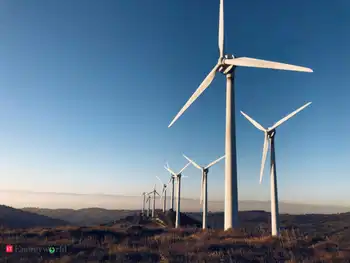Shutoffs of utilities up dramatically from 2007
Philadelphia Gas Works terminated the woman's service, and she has yet to have it restored as she tries to get back on her feet with a part-time job. The plight of Tanya (whose last name is not being used because she risks eviction from her Section 8 housing for failing to have utilities) has become a textbook case of why electric, gas and water terminations are way up this year - 51 percent statewide - according to a recent report by the Pennsylvania Public Utility Commission. The PUC regulates the state's utilities.
Advocates for the poor say the safety net that was established to protect low-income people is falling short in helping those who lose their jobs in a tough economy and as food and energy costs rise. They also blame a state law enacted in 2004 for granting utilities too much authority in terminating service for those who fall behind on their payments.
Tanya said that once her gas was shut off, her hot water went with it.
"I'm trying to hang in there," she said. "It's been very difficult."
A spokesman for PGW said Tanya should have contacted the utility as soon as she lost her job to ask for assistance in paying her gas bill. He said that among the programs available to her is PGW's CARES (Customer Assistance Referral and Evaluation) program, for customers with special and medical needs and financial emergencies.
"Financial hardships happen," Wade Colclough at PGW said. "That's why we urge that you call us before you get into a situation where you are past due on your bills."
Jonathan Stein, general counsel for Community Legal Services Inc., which provides free legal services to low-income people in Philadelphia, said the numbers in the PUC report reveal "how aggressive and often arbitrary utilities are in cutting off service."
There were increases in terminations for all of the state's major electric companies from April 2007 to April 2008, according to the PUC report.
Peco, which serves 1.6 million electric customers and 480,000 natural gas customers, saw terminations spike 55 percent.
PGW, which has 500,000 customers in the city, recorded a 91 percent jump in terminations. Meanwhile, PGW reconnections - where service is turned back on - decreased 17 percent.
Stein said a major reason for the dramatic increase in terminations was Act 201, which was passed by the Pennsylvania legislature and signed into law by Gov. Rendell in late 2004. He said the law allowed utilities to more easily terminate service to those delinquent on their bills, and stripped protections for consumers.
Chuck Ardo, spokesman for Rendell, said the law "was in response to a very large number of people that were intentionally failing to pay their utility bills."
Stein said another issue was that each of the utilities across Pennsylvania has its own customer assistance programs, or CAPs, which are essentially bill-discounted programs for special-needs customers.
"The CAPs aren't large enough," he said.
But the utilities contend that not enough people take advantage of their assistance programs, choosing instead to ignore repeated warnings of their delinquency.
"We know prices are changing," Cameron Kline, spokesman for Peco said, "and we want to help them as much as we can."
Kline said one reason for the big increase in terminations at Peco could be attributed to the company's installing a new billing system last year. During the conversion, it had stopped sending out terminations.
To make up for that time, Kline said Peco began shooting for 1,750 terminations a week among the worst delinquent payers, starting April 1 this year.
"The idea is to go after individuals that have the largest unpaid balances first," Kline said, "and then just work down that list."
New Jersey is also seeing an increase in the number of customers experiencing high energy costs and shutoffs.
Electric shutoffs went from 146,578 in 2004 to 175,581 last year, according to the New Jersey Board of Public Utilities, which regulates the state's utilities. Gas terminations shot up from 17,638 in 2004 to 20,316 last year.
PSE&G of Newark, which services about 1.6 million gas and 1.9 million electric customers in New Jersey, saw terminations go from 24,400 in the first quarter of 2007 to 26,200 for the first quarter of 2008, an increase of 1,800 cases.
Colclough at PGW said that monthly visits by PGW workers to delinquent customers' homes had increased more than 500 in April 2008 from April 2007 and that phone calls to customers who were past due on their bills had increased 13,000.
He said payment arrangements had increased more than 3,500 in the same period.
But Harry S. Geller of the Pennsylvania Utility Law Project, a statewide project that provides support, assistance and information to low-income individuals and organizations on utility and energy matters, said funds for LIHEAP (the Low-Income Home Energy Assistance Program) were insufficient. He said the program was prematurely curtailed at the end of March. In the past, LIHEAP extended into April and sometimes into May.
Ardo said the move was to set aside $14.5 million in funds to have enough money for next year.
"Given the uncertainty of future funding for the program, we wanted to make sure we had enough money to get us through next year given the astronomical rises in heating-fuel costs," he said.
Related News

Why Canada should invest in "macrogrids" for greener, more reliable electricity
OTTAWA - As the recent disaster in Texas showed, climate change requires electricity utilities to prepare for extreme events. This “global weirding” leads to more intense storms, higher wind speeds, heatwaves and droughts that can threaten the performance of electricity systems.
The electricity sector must adapt to this changing climate while also playing a central role in mitigating climate change. Greenhouse gas emissions can be reduced a number of ways, but the electricity sector is expected to play a central role in decarbonization. Zero-emissions electricity can be used to electrify transportation, heating and industry and help achieve emissions reduction in…





